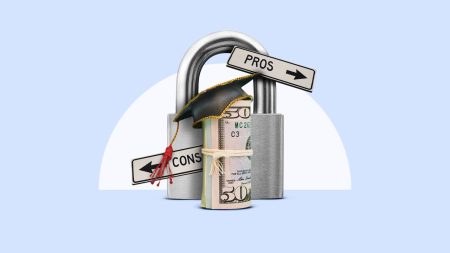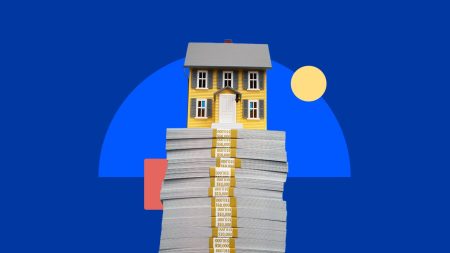If you’re a homeowner, you’ve likely been feeling the sting of rising property taxes. Property tax bills have been climbing, marching upward along with home prices.
Nationwide, property taxes increased 27 percent, on average, between 2019 and 2024, according to Cotality, formerly CoreLogic, a company that analyzes property data trends. This steep rise in taxes has been taking a toll on American homeowners, raising housing costs and squeezing budgets.
That said, some homeowners are feeling the climb more than others. And it has a lot to do with the cost of living in the community that you call home.
“Taxes are always tied into property values,” says Rick Sharga, president and CEO of CJ Patrick Company, a market intelligence firm. “You have a whole different basis for taxes if you’re in Southern California than if you’re in Southern Nebraska.”
The cost of the services paid for through your taxes also differs depending on where you live, he says. “Fire departments, police departments, ongoing maintenance and schools — and the cost of running them — vary pretty dramatically,” Sharga says.
That’s why home buyers should pay close attention to property taxes before making a home purchase. They also need to be aware that those taxes are not set in stone, and any future tax increases will need to be absorbed into their budgets.
10 states with the highest property taxes
Below is a list of the 10 states with the highest effective property tax rates, according to a 2025 Tax Foundation report based on 2023 data.
The effective tax rate is the average amount of residential property taxes paid, expressed as a percentage of home value, according to the Tax Foundation.
| States with the highest effective property tax rates |
Average amount paid (percentage of home value) |
|---|---|
| 1. Illinois | 1.83% |
| 2. New Jersey | 1.77% |
| 3. Connecticut | 1.48% |
| 4. Nebraska | 1.43% |
| 5. Vermont | 1.42% |
| 6. New Hampshire | 1.41% |
| 7. Texas | 1.36% |
| 8. Ohio | 1.31% |
| 9. New York | 1.26% |
| 10. Wisconsin | 1.25% |
| Source: Tax Foundation |
10 counties with the highest property taxes
Zoom in to the county level, and you’ll see that the most expensive locales are concentrated in a few states. The highest effective property taxes by county are:
| Counties with the highest effective property tax rates |
Average amount paid (percentage of home value) |
|---|---|
| 1. Menominee County, Wis. | 3.64% |
| 2. Camden County, N.J. | 3.08% |
| 3. Salem County, N.J. | 3.03% |
| 4. Orleans County, N.Y. | 3% |
| 5. Allegany County, N.Y. | 2.94% |
| 6. Gloucester County, N.J. | 2.81% |
| 7. Monroe County, N.Y. | 2.79% |
| 8. Cattaraugus County, N.Y. | 2.69% |
| 9. Lake County, Ill. | 2.68% |
| 10. Cortland County, N.Y. | 2.65% |
| Source: Tax Foundation |
Keep in mind that the dollar value of property tax bills will fluctuate with housing prices — and higher property tax bills are typically found in places with higher housing prices. That said, higher payments can also be reflective of a higher cost of government.
Many of the counties in the list above are in New Jersey and New York, with another in Illinois. But the county with the highest effective tax rate in 2023 was Menominee County, Wis.
Menominee is a bit of an outlier, with its higher taxes partly due to its small tax base, according to the county treasurer’s office. A large portion of the county is made up of the Menominee Reservation.
10 states with the lowest property taxes
Here are the 10 states with the lowest effective property tax rates. (Note: A number of states are tied for effective property tax rate, so there are actually 15 states listed here.)
| States with the lowest effective property tax rates |
Average amount paid (percentage of home value) |
|---|---|
| 1. Hawaii | 0.32% |
| 2. Alabama | 0.36% |
| 3. Arizona | 0.44% |
| 4. South Carolina and Utah | 0.47% |
| 5. Idaho and West Virginia | 0.48% |
| 6. Nevada and Tennessee | 0.49% |
| 7. Colorado and Delaware | 0.5% |
| 8. Arkansas | 0.53% |
| 9. Louisiana and Wyoming | 0.55% |
| 10. Mississippi | 0.58% |
| Source: Tax Foundation |
It always pays to understand a local market’s taxes before making a home purchase. A real-estate or mortgage professional can help buyers estimate property taxes so they know the kind of tax bill that will come with the property.
How property taxes are calculated
Local governments have different property tax rates and use different methods for calculating property taxes. Generally, jurisdictions assess the value of a property, determine its taxable value and apply the tax rate, according to the Tax Policy Center, a nonprofit research organization. There are a variety of formulas used to do this.
Keep in mind that not all states use 100 percent of the property’s value when calculating tax; many use what is called a fractional assessment system. There are also exemptions that can lower a property tax bill, including homestead exemptions for homeowners and other breaks for seniors and veterans.
Plus, some homeowners are able to deduct their property taxes when they file their income taxes. That can provide some relief.
Hidden costs on the rise
Property taxes are often considered a “hidden cost” that takes a backseat when buyers consider the purchase of a home, Sharga said. Home insurance is another cost that doesn’t get as much attention as the home’s asking price.
“Usually when you’re getting a loan, the lender is looking primarily at your principal and interest payments. But increasingly, they really do have to be paying very close attention to taxes and insurance, because both of those have gone up significantly over the last three to five years,” Sharga says.
The median monthly principal and interest payment for a home was $2,285 in April 2025, according to the Federal Reserve Bank of Atlanta’s Home Ownership Affordability Monitor. That assumes a $392,500 median-priced home with an interest rate of 6.7 percent.
But add taxes, insurance and primary mortgage insurance (PMI) and the total housing cost jumps to $3,069 per month. That’s $784 a month on top of the mortgage principal and interest.
“It’s really important to be looking at your property tax and your insurance costs to figure out if you really can afford to buy that house, and you need to factor in some degree of increases on a future basis. That’s where a lot of homeowners get shocked,” Sharga says.
“You get a 30-year fixed-rate loan, so you assume that you’re locked into a monthly housing cost, and then when that property reassessment hits and your tax goes up, or you get your annual insurance premium update — a lot of people simply haven’t budgeted for those increases,” he says.
Why we ask for feedback
Your feedback helps us improve our content and services. It takes less than a minute to
complete.
Your responses are anonymous and will only be used for improving our website.
Help us improve our content
Read the full article here









